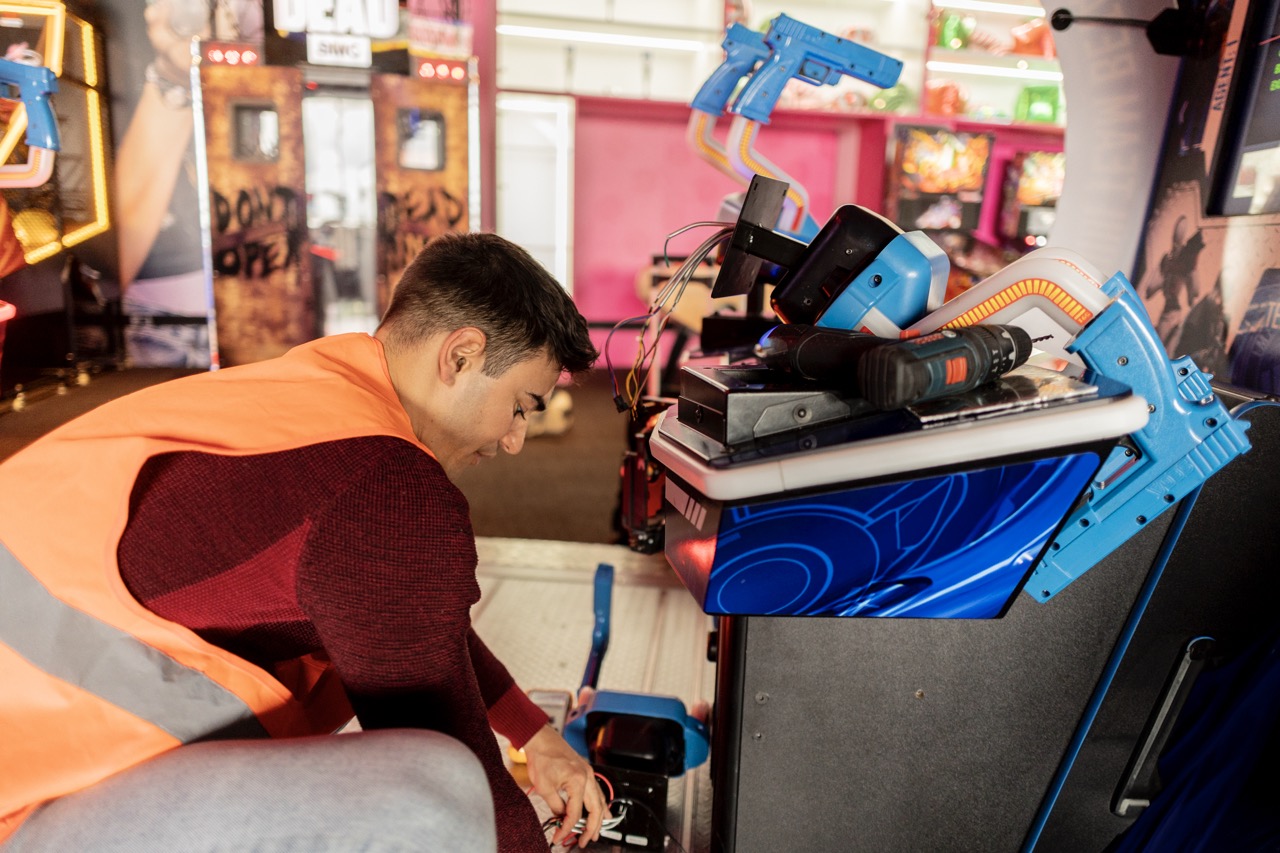In an age where technology continues to reshape our entertainment landscape, one innovation that has captured attention is the Triple-Screen Spectacle, pioneered by the visionary Darius. This multi-screen experience elevates traditional storytelling and engagement to new heights, offering audiences a chance to immerse themselves in a narrative like never before. In this article, we’ll dive into the essence of the Triple-Screen Spectacle, explore Darius’s unique vision, and look ahead to what the future holds for this groundbreaking form of entertainment.
Unpacking the Triple-Screen Spectacle: What’s It All About?
The Triple-Screen Spectacle is more than just a visual feast; it’s an immersive journey that engages viewers on multiple levels. Imagine three screens working in tandem, presenting different angles, perspectives, or even entirely separate narratives that intertwine to create a cohesive story. This setup fosters a sense of connection and involvement, drawing audiences in as they navigate through the layers of content.
Each screen serves a distinct purpose, whether it’s showcasing live action, animation, or interactive elements that allow viewers to influence the storyline. Users can switch between screens, interact with characters, or even affect outcomes, making each experience unique and personalized. This engagement heightens viewer satisfaction and makes them active participants rather than passive observers.
Moreover, the Triple-Screen Spectacle has broad applications beyond just entertainment. It can be utilized in educational settings for immersive learning experiences, in marketing for compelling brand narratives, and even in art installations that require a multi-faceted approach. The potential for creativity is limitless, making this innovation a game-changer in various fields.
Darius: The Visionary Behind the Triple-Screen Experience
Darius has always been a trailblazer in the world of visual storytelling. With a background in film, technology, and interactive media, he has spent years exploring how to enhance viewer engagement. The concept of the Triple-Screen Spectacle emerged from his desire to break the traditional barriers of storytelling and create something that resonates deeply with audiences.
His early works showcased a fascination with blending different media formats. Darius’s passion for technology led him to experiment with augmented and virtual reality, ultimately shaping his vision for the Triple-Screen experience. He believes that storytelling should not just be something you watch but something you feel and interact with, and this philosophy drives his work.
Darius’s relentless pursuit of innovation has garnered attention from industry leaders and has inspired a new generation of creators. He sees the Triple-Screen Spectacle as a way to redefine how stories are told, ensuring that audiences remain engaged and connected in an increasingly digital world. His ambition is not just to entertain but to spark curiosity and conversation around the art of storytelling.
How the Triple-Screen Works: A Peek Behind the Scenes
At the heart of the Triple-Screen experience lies intricate technology that seamlessly integrates three distinct displays. Each screen is synchronized to deliver a cohesive visual narrative while offering unique content. This synchronization is achieved through specialized software that allows for real-time updates and interactions, ensuring that the story flows naturally from one screen to the next.
Behind the scenes, a dedicated team of designers, programmers, and storytellers collaborates to create the multi-layered experience. They work tirelessly to craft narratives that transcend traditional storytelling methods by weaving together different visual and auditory elements. This collaborative effort transforms a simple viewing experience into an interactive spectacle that invites viewers to explore deeper meanings and connections.
Moreover, the technological framework is designed to be flexible and scalable, making it easy for creators to adapt the Triple-Screen setup for various applications. From live performances to immersive art installations, the versatility of the setup allows it to cater to diverse audiences and needs. This adaptability is crucial as it opens up avenues for further innovation and creativity in the entertainment industry.
The Future of Entertainment: Darius’ Next Big Plans
With the success of the Triple-Screen Spectacle, Darius is already looking ahead and envisioning the next phase of this entertainment revolution. His goal is to expand the concept into virtual reality (VR) and augmented reality (AR) environments, allowing for an even more immersive experience. Imagine stepping into a fully realized three-dimensional world where viewers can physically move between screens and interact with characters in real-time.
In addition, Darius is exploring collaborations with various sectors, including education and healthcare, to leverage the power of interactive storytelling in training and learning. He believes that the principles behind the Triple-Screen can be applied to create engaging educational tools that help students grasp complex subjects in an enjoyable way. This interdisciplinary approach could redefine how we think about learning through storytelling.
Finally, Darius aims to democratize the Triple-Screen experience by providing resources and tools for aspiring creators. He envisions a platform where individuals can experiment with their own multi-screen stories, encouraging a community of innovation and exploration. By fostering creativity and collaboration, Darius hopes to inspire the next wave of storytellers to push the boundaries of what is possible in entertainment.
The Triple-Screen Spectacle represents a bold step into the future of storytelling, blending technology, creativity, and interactivity in ways that were unimaginable just a few years ago. With Darius at the helm, this innovative experience not only captivates audiences but also paves the way for future advancements in the field. As we anticipate what’s next for Darius and the world of entertainment, one thing is certain: the journey of storytelling has only just begun, and the best is yet to come.










